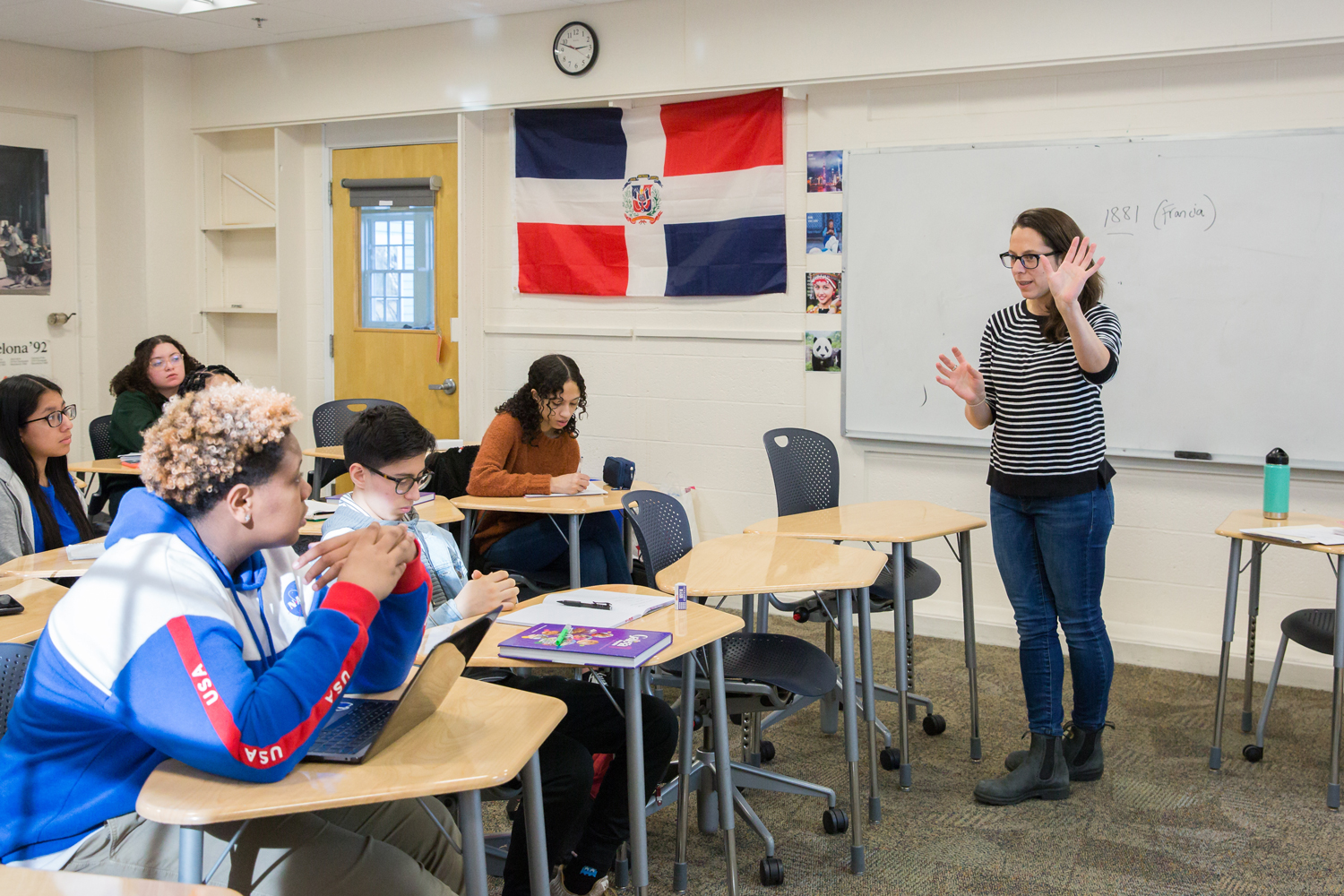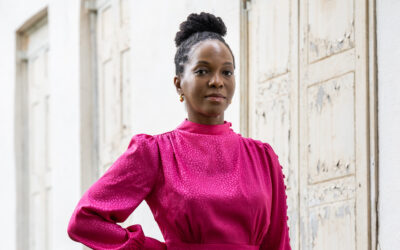CA introduces a Spanish class for heritage speakers
by Alison Lobron
When Kezia Almonte ’20 arrived at Concord Academy as a freshman, she tested into a level-3 Spanish class. The New Jersey resident had learned the language by spending summers with her grandparents in the Dominican Republic, but she had never studied it. Entering a fast-paced classroom filled primarily with sophomores and juniors was, she recalls, “super overwhelming.”

“I had never taken a Spanish class before coming to CA,” she says. “I had no clue how to understand any of it.”
Topics like verb tenses were unfamiliar, while some of the cultural information felt like a repeat of what she already knew. So as she moved on to upper-level electives, Kezia was excited to learn that Spanish teacher Carmen Welton was designing a new Spanish course aimed at “heritage speakers,” students who grew up speaking or hearing the language at home.
Spanish for Heritage Speakers launched in fall 2019, with nine freshmen and sophomores, plus Kezia as a teaching assistant. The course offers students language instruction tailored to their specific needs. “I’ve always been aware of the different nature of teaching a heritage speaker than a student who learned Spanish in the classroom,” says Welton, also a house faculty member and cross-country coach in her fifth year at CA. “Heritage speakers typically haven’t had formal instruction in the language, and so the flexibility to incorporate cultural content at a greater rate, to address a more specific set of linguistic struggles, and to differentiate the learning to suit individual relationships to the language is of paramount importance in supporting these students.”
“I’ve always been aware of the different nature of teaching a heritage speaker than a student who learned Spanish in the classroom.”
– Carmen Welton, CA Spanish teacher
Late one January afternoon, the class is studying irregular verb forms. As Welton projects new questions from her laptop onto the smartboard, students nod in recognition. Traer, ir. They murmur conjugations aloud as the lesson progresses.
In some ways, the class is indistinguishable from others taking place on the bustling language hallway that overlooks the quad. But Welton’s focus is on helping her students acquire the skills of formal language study and gain confidence in daily conversation. The texts she assigns, ranging from essays and short stories to poems and song lyrics, reflect the experiences of bilingual and bicultural authors.
Juan Matos – a celebrated Dominican poet, currently the poet laureate of Worcester, Mass., and a veteran public school teacher – inaugurated the course in the fall while Welton was on parental leave. Matos says his main goal was to help students get comfortable speaking and seeing connections between the language and their cultures. “Many understood the language but didn’t feel comfortable speaking it,” he says. He used songs, food, and folklore from different Spanish-speaking cultures to help students connect their identities with the language.
Students say that approach, which Welton is continuing in this yearlong course, is helping them gain confidence in their language skills as they forge relationships with both peers and community members – within CA and beyond – who share heritage-based experiences, journeys, and goals. “We get to relate and get to have fun,” says Mathew Gutierrez ’23. “We get into very cultural things like tongue twisters. It’s having fun while also learning at the same time.”
The students say they appreciate having teachers who are either native Spanish speakers, like Matos, or grew up hearing the language from family members, like Welton. “In past Spanish courses, I was taught by teachers who weren’t of Latino heritage, and it was harder to relate,” says Ashton Mota ’23. “Having teachers like Carmen and Juan, it is easier to connect to what they are teaching.”
Students are also making connections with the larger school community, says Welton. One assignment this year asks them to interview Spanish-speaking staff – many of whom work in dining services – and record the interviews as podcasts. In future years, Welton hopes to invite Spanish-speaking alumnae/i and friends into the classroom as well.
As a teaching assistant, Kezia enjoys serving as a mentor to younger students (including her sister, Kayla Almonte ’22) and learning how teachers plan and structure lessons. “I always find it to be a really fun class,” she says. “I wish I’d had it at their age.”
Collaborators Welcome
CA community connections could enhance this class! If you’d like to collaborate, contact Spanish teacher Carmen Welton at carmen_welton@concordacademy.org.


